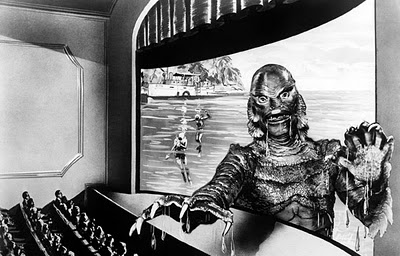
HOW TO VIEW 3D
WITHOUT GLASSES
Stereo drawings and photographs require two pictures, one for each eye. Then the pictures must be presented to your eyes so that each eye sees only the picture intended for it. Generally two methods are used: (1) parallel viewing and (2) cross-eyed viewing. Both methods require one to learn a new visual skill.Normally when we look at the "real" world, our eyes converge on an object in the scene and they also focus on that same object. We habitually do this, and our brains have become accustomed to a one-to-one correspondence between focus and convergence.
We can learn to "unlock" focus and convergence, enabling us to view stereo pairs without optical aid. In this document we use a display method which can be adapted to either parallel-eye viewing or crossed-eye viewing. Three pictures will be shown side by side. The middle one is to be viewed with the right eye. The other two are identical and one is to be viewed with the left eye. Here's how to view them.
(1) Parallel viewing. This is sometimes called wall-eyed viewing. Use the left and middle pictures only. Look at a distant object then bring your eyes down to the paper trying not to converge or focus on the paper. You'll see a blurred double image. Consciously try to bring the double image into one. Now try to focus your eyes on it without allowing the two images to drift apart.Parallel viewing is limited to pictures about 2.5 inches wide, the spacing of the typical human eye (which averages 65 mm).
(2) Cross eyed viewing. Use the right and middle pictures only. Hold your finger exactly halfway between your eyes and the page. Focus on your finger. Your eyes will be converged on the finger also, and you should be conscious of the two pictures out of focus behind your finger, but probably nearly coincident. Move your finger a bit until the two pictures are fully coincident. Now hold that convergence while refocusing from your finger to the page. Finally, you can remove your finger from the field of view.
Crossed eyed viewing can be used with even larger pictures. Paintings have been presented this way. Salvadore Dali painted some of this kind. For those who can learn the skill of viewing, this is one of the most effective ways for viewing stereo without special glasses.
(2) Mirror method. For completeness, we illustrate a method rarely used in printed books. Popular Photography magazine experimented with it for a while. One picture of the pair is printed normally, ad the other is printed beside it, but reversed left/right. That picture is viewed through a mirror which re-inverts it. We will not use that method here.
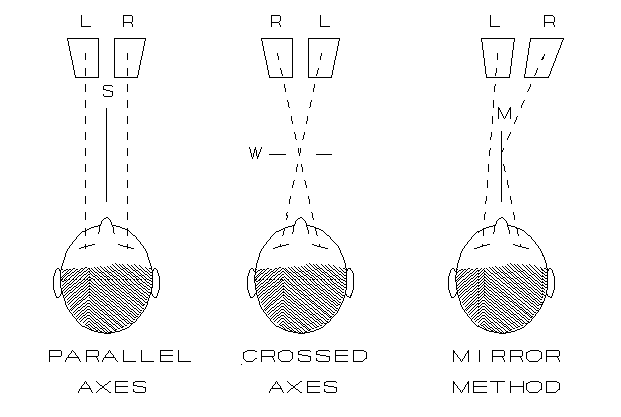
For practice, try this illustration from Sir Charles Wheatstone's book The Stereoscope.[2]
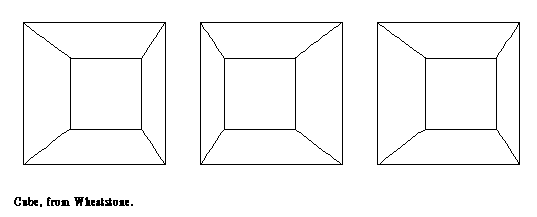
Don't expect to succeed the first time. This skill takes conscious effort and concentration. When you do succeed, you'll see the pictures snap into full three-dimensional depth. The picture will look like a wire-frame box. You'll actually see two 3-D images, one with normal depth, one with inverted (pseudoscopic depth). On either side of these you'll see fainter, phantom images with no depth. Ignore them.
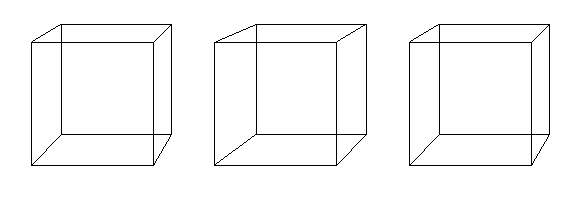
Here's some more practice examples:


If you use cross eyed viewing on the pair intended for parallel, or vice versa, you will see a "pseudoscopic" depth, in which near and far are reversed. In the first picture, the pseudoscopic view appears as if you are looking down onto a truncated pyramid. In the second picture, the cone seems upright in the normal view, but tilted back and viewed from its base in the pseudoscopic view. Wire-frame stereo drawings often look interesting either way.
Here's another example for practice.
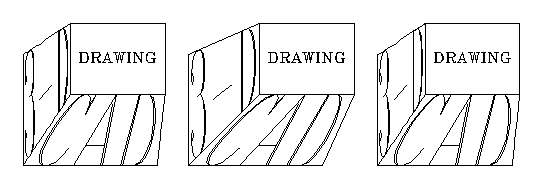
Now for some practice with actual stereo photograps. This one is for parallel viewing. It is small because most people cannot diverge their eyes, so pictures for parallel viewing should not be more than about 2.5 inches apart. Old-fashioned Holmes stereoscopes had prismatic lenses to allow viewing pictures 3 inches apart.

Now the same picture, larger, for cross-eyed viewing.
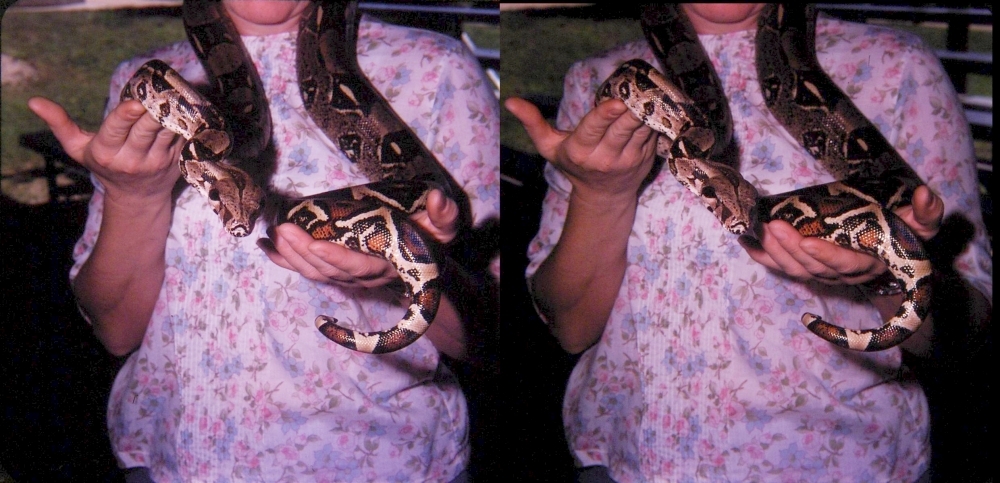
Stereos for cross-eyed viewing in 3d Gallery One.
Still more, mostly taken with a digital camera in 3d Gallery Two.
Stereo view cards in 3d Gallery Three.
Home-built digital stereo macro camera attachment 3d Gallery Four.
Review of the Loreo stereo attachment 3d Gallery Five.
Review of the Loreo macro adapter, 3d Gallery Five B
Wildlife photography in your backyard 3d Gallery Six.
A home-built digital stereo camera using mirrors 3d Gallery Seven.
Stereo close-up photography in your garden 3d Gallery Eight.
Stereo photography in your aquarium 3d Gallery Nine.
Stereo digital infrared photography 3d Gallery Ten.
Wider angle stereo with the Loreo LIAC 3d Gallery ll. A failed experiment.
Review of the Fuji FinePix Real 3D W1 camera 3d Gallery 12.
Macrophotography with the Fuji 3D camera. 3d Gallery13.
Panoramic stereo photography. 3d Gallery 14.
Tips for stereo photography with the Fuji 3d camera. 3d Gallery 15.
Mirror methods for stereo photography. 3d gallery 16.
The Fuji 3d macro adapter using mirrors, by Paul Turvill.
The Fuji 3d macro adapter with flash! 3d gallery 17.
Critters in stereo. 3d gallery 18
Wide angle stereo. 3d gallery 19.
Telephoto Stereo. 3d gallery 20.
2D to 3d conversion. 3d gallery 21.
Stereos from outer space. 3d gallery 22.
Review of the Panasonic Lumix 3d digital camera. 3d gallery 23.
Shifty methods for taking stereo pictures.
Digital stereo photography tricks and effects.
Stereoscopy with two synchronized cameras by Mike Andrus.
Guidelines for Stereo Composition.
Return to the the 3d and illusions page.
Return to Donald Simanek's front page.